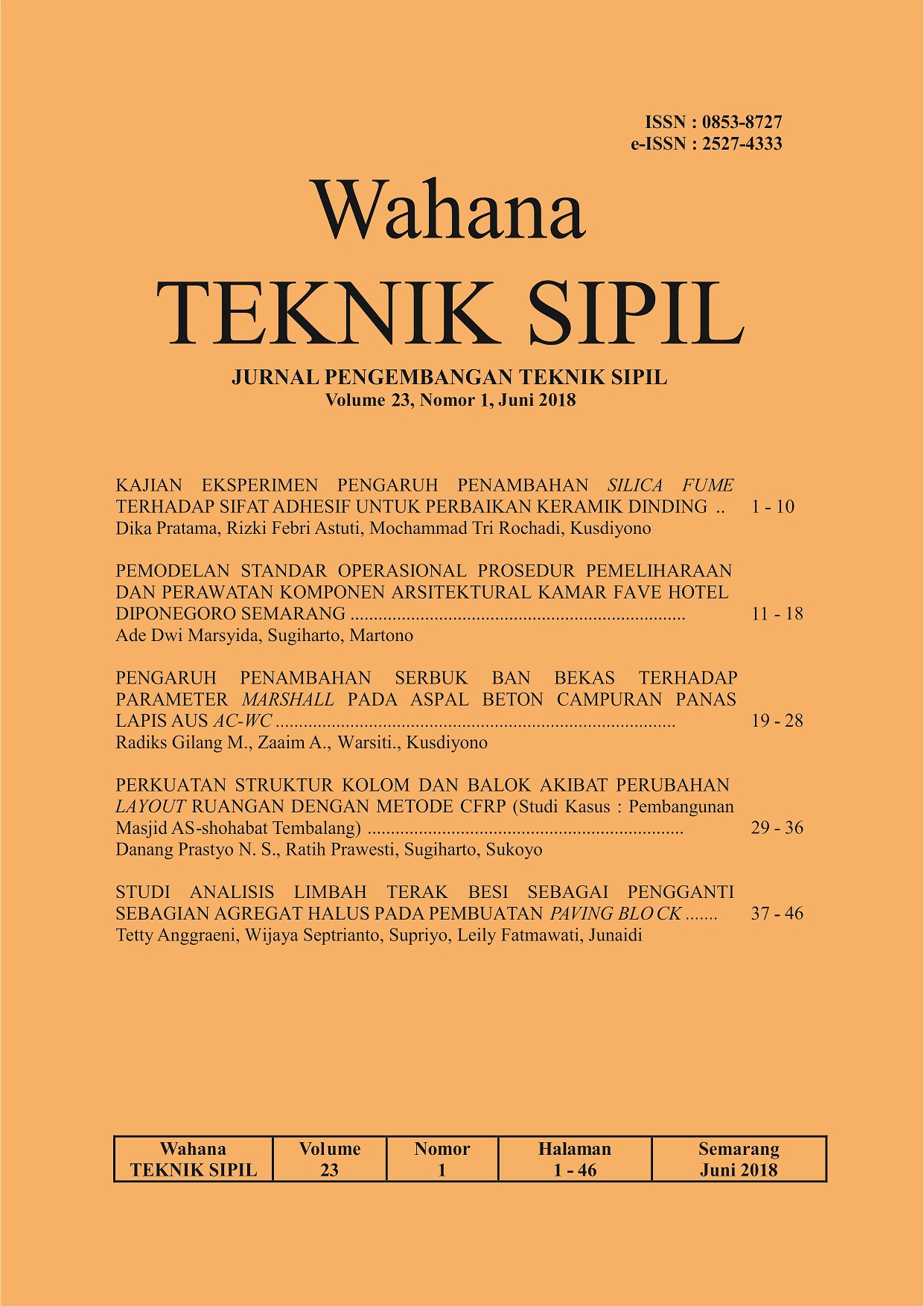Pengaruh Penambahan Serbuk Ban Bekas Terhadap Parameter Marshall Pada Aspal Beton Campuran Panas Lapis Aus AC-WC
DOI:
https://doi.org/10.32497/wahanats.v23i1.1354Abstract
The performance of the mixture characteristic of flexible pavement construction on the laston AC-WC mixture as a surface layer (wear layer) with the addition of used tire powder, is expected to be an alternative material to increase the quality and durability. This research was conducted to analyze the characteristics of the Laston AC-WC mixture with the use of polymeric materials in the form of used tire powder. Addition of added ingredients such as used tire powder to the asphalt mixture can provide better resistance to high temperatures and loads, compared to asphalt without added material added. The research objective was to add used tire powder to the optimum asphalt content of asphalt variation (0%, 5%, 10%, 15%) under standard conditions with 2x75 collisions and refusal conditions or balancing with 2x400 collisions. The results showed that the KAO used (6.0%) which affects the value of Density, VMA, VFA, VIM, VIM Refusal density, Marshall Stability, Flow, MQ, and Marshall Time Stability. AC-WC mixture with four variations in the addition of tire powder (0%, 5%, 10%, 15%).
Kata kunci : laston AC-WC, parameter marshall, serbuk ban bekas
Downloads
Published
Issue
Section
License
Authors who publish with this journal agree to the following terms:Authors retain copyright and grant the journal right of first publication with the work simultaneously licensed under a Creative Commons Attribution License that allows others to share the work with an acknowledgement of the work's authorship and initial publication in this journal.
Authors are able to enter into separate, additional contractual arrangements for the non-exclusive distribution of the journal's published version of the work (e.g., post it to an institutional repository or publish it in a book), with an acknowledgement of its initial publication in this journal.
Authors are permitted and encouraged to post their work online (e.g., in institutional repositories or on their website) prior to and during the submission process, as it can lead to productive exchanges, as well as earlier and greater citation of published work (See The Effect of Open Access).






